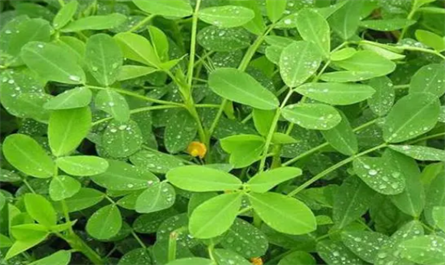Factors affecting the effect of foliar fertilizer
Factors affecting the effect of foliar fertilizer

Leaves
Leaf wax and cuticle thickness, leaf activity, etc. can all affect the absorption of foliar fertilizer. New leaves with thin cuticles and strong leaf activity have good absorption effects on foliar fertilizer. Urea has a softening effect on the cuticle of epidermal cells and can accelerate the penetration of other nutrients, so urea has become an important component of foliar fertilizer. Neutral soaps, silicone additives, etc. can soften the cuticle, improve the spreadability of fertilizer solutions, increase the contact area with leaves, and improve absorption efficiency. Leaf age is generally related to leaf activity, and new leaves are easier to absorb nutrients than old leaves.
Nutritional status of the plant itself
Nutrient-deficient plants have a strong ability to absorb nutrients. If the plant grows normally and the nutrient supply is sufficient, it will absorb less after spraying foliar fertilizer; otherwise, it will absorb more.
Environmental conditions
Light, humidity, temperature, etc. have a great influence on the absorption of foliar fertilizer. Weak light and high air humidity are conducive to the absorption of foliar fertilizer. If the concentration of foliar fertilizer is too high and the water evaporates too quickly, it may burn the leaves and cause fertilizer damage. Generally, on cloudy days or at 4:00~5:00 in the afternoon, when the temperature is 20~25 degrees Celsius, the effect of foliar fertilizer spraying is better.
Properties of spraying solution
The concentration of solution, pH value, surface tension of solution, mobility of nutrient elements, etc. also affect the absorption of foliar fertilizer. Different foliar fertilizers have different suitable concentrations, and the concentration of spraying solution should be adjusted according to requirements. When supplying cations, the solution is adjusted to slightly alkaline; when supplying anions, the solution is adjusted to slightly acidic, which is conducive to the absorption of nutrient elements. Experts believe that adding 2% neutral laundry detergent to the spraying solution can reduce the surface tension of the solution, increase the contact area between the solution and the leaves, and absorb nutrients faster. The absorption of leaves is positively correlated with the mobility of nutrients in the leaves. The nutrient elements with faster nutrient movement speed in the leaves are also absorbed faster.
Movement speed of various elements in plant leaves
The movement speed of nutrient elements in leaves is generally: nitrogen>potassium>phosphorus>sulfur>zinc>iron>copper>manganese>molybdenum>boron>calcium. When spraying elements that are not easy to move, it is necessary to increase the number of spraying and pay attention to the spraying position. For example, iron, boron, molybdenum, etc., which move slowly, are better sprayed on new leaves. In addition, the time the solution wets the leaves also affects the absorption of foliar fertilizer. Generally, the absorption rate is fastest when the leaves are wet for 30 minutes to 1 hour.

Leaves
Leaf wax and cuticle thickness, leaf activity, etc. can all affect the absorption of foliar fertilizer. New leaves with thin cuticles and strong leaf activity have good absorption effects on foliar fertilizer. Urea has a softening effect on the cuticle of epidermal cells and can accelerate the penetration of other nutrients, so urea has become an important component of foliar fertilizer. Neutral soaps, silicone additives, etc. can soften the cuticle, improve the spreadability of fertilizer solutions, increase the contact area with leaves, and improve absorption efficiency. Leaf age is generally related to leaf activity, and new leaves are easier to absorb nutrients than old leaves.
Nutritional status of the plant itself
Nutrient-deficient plants have a strong ability to absorb nutrients. If the plant grows normally and the nutrient supply is sufficient, it will absorb less after spraying foliar fertilizer; otherwise, it will absorb more.
Environmental conditions
Light, humidity, temperature, etc. have a great influence on the absorption of foliar fertilizer. Weak light and high air humidity are conducive to the absorption of foliar fertilizer. If the concentration of foliar fertilizer is too high and the water evaporates too quickly, it may burn the leaves and cause fertilizer damage. Generally, on cloudy days or at 4:00~5:00 in the afternoon, when the temperature is 20~25 degrees Celsius, the effect of foliar fertilizer spraying is better.
Properties of spraying solution
The concentration of solution, pH value, surface tension of solution, mobility of nutrient elements, etc. also affect the absorption of foliar fertilizer. Different foliar fertilizers have different suitable concentrations, and the concentration of spraying solution should be adjusted according to requirements. When supplying cations, the solution is adjusted to slightly alkaline; when supplying anions, the solution is adjusted to slightly acidic, which is conducive to the absorption of nutrient elements. Experts believe that adding 2% neutral laundry detergent to the spraying solution can reduce the surface tension of the solution, increase the contact area between the solution and the leaves, and absorb nutrients faster. The absorption of leaves is positively correlated with the mobility of nutrients in the leaves. The nutrient elements with faster nutrient movement speed in the leaves are also absorbed faster.
Movement speed of various elements in plant leaves
The movement speed of nutrient elements in leaves is generally: nitrogen>potassium>phosphorus>sulfur>zinc>iron>copper>manganese>molybdenum>boron>calcium. When spraying elements that are not easy to move, it is necessary to increase the number of spraying and pay attention to the spraying position. For example, iron, boron, molybdenum, etc., which move slowly, are better sprayed on new leaves. In addition, the time the solution wets the leaves also affects the absorption of foliar fertilizer. Generally, the absorption rate is fastest when the leaves are wet for 30 minutes to 1 hour.
RECENT POSTS
-
Rational Use of Plant Growth Regulators to Promote Fruit Tree Yield and Quality Improvement
-
Combination of Different Plant Growth Regulators with Rooting Hormone
-
Differences and Applications of Zeatin Trans-Zeatin and Trans-Zeatin Riboside
-
14-Hydroxylated brassinolide Supporting Scientific Planting and Application Analysis of Typical Crops
Featured News



